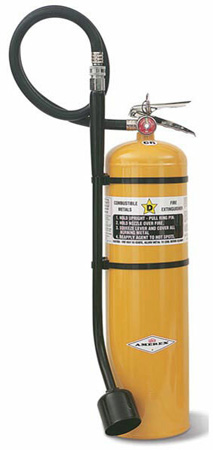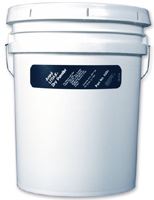| The Home page of ILPI's Safety Data Sheet (SDS) Resource, the leader in SDS information since 1995! | |
| The history and philosophy behind this resource. | |
| A curated collection of books and reference materials concerning Safety Data Sheets and closely related topics. | |
| Paste your plain text SDS into the SDS-Demystifier, and it will be converted into a hypertext-enriched document with links to detailed explanations of each key term. | |
| An extensive list of frequently asked questions about Safety Data Sheets including regulations, content, compliance, and more. | |
| A humorous take on Safety Data Sheet jargon. Fill in the blanks on our entry form to generate a personalized Unsafety Data Sheet to share with your coworkers. | |
| Since 1995, we've maintained this massive curated list of the best places to find Safety Data Sheets on the Internet. | |
| You are here! Way more than a glossary, this hypertext-enhanced resource covers hundreds of SDS-related terms and expert knowledge. Each entry includes both the SDS relevance and links to additional authoritative resources. | |
| Archived results of Safety Data Sheet related polls taken by some of our millions of site visitors | |
| The OSHA regulations behind SDS regulations, including the inspection guidelines and over 400 official interpretations letters under the Hazard Communication Standard | |
| Commercial suppliers of SDS authoring and management software as well as cloud compliance services. | |
| Commercial companies that will create SDS's for your specific needs as well as SDS translation companies. |

Safety signs, banners, and scoreboards? Get yours at Safety Emporium!
Definition
A pyrophoric material can spontaneously ignite in air. The word is derived from Greek for "fire-bearing".
Many pyrophoric materials are also water reactive, reacting vigorously with water or high humidity, often igniting upon contact.
Additional Info

Get your Class D and other specialty extinguishers from Safety Emporium.
Examples of pyrophoric materials include organometallic reagents such as alkyllithiums, alkylzincs, alkylmagnesiums (Grignards) and some finely divided metal powders. Specific examples include diborane (B2H6), diethylzinc (Zn(CH2CH3)2), tert-butyllithium (LiC(CH3)3) and diphosphine (P2H4).
These highly reactive substances are quite useful in the synthesis of organic chemicals, but special training is required to store and handle these materials safely. Most typically, pyrophoric materials are manipulated in an inert (unreactive) atmosphere of nitrogen or argon using specialized glassware.
Aldrich Chemical offers some technical data sheets which are useful for those working with pyrophoric materials. The following are in PDF format:
- Aldrich Technical Bulletin AL-134, Handling Air-Sensitive Reagents
- Aldrich Technical Bulletin AL-164, Handling Pyrophoric Reagents
In addition, the American Chemical Society's, Division of Chemical Health and Safety (DCHAS) has made available a very useful paper Safe Handling of Organolithium Compounds in The Laboratory (Schwindeman, J. A., Woltermann, C. J., Letchford, R. J. J. Chem. Health & Safety 1992, 2, 6-11. doi:10.1016/S1074-9098(02)00295-2). This article discusses proper techniques as well as recent non-pyrophoric alternatives to traditional reagents such as n-butyllithium. In addition, those with questions can join the DCHAS Email Discussion List for comments and questions about pyrophoric materials or just any other matter concerning chemical health and safety.
Note that many laboratories use "quick and dirty" handling methods which pose a greater risk of laboratory accidents compared to the methods described in the Aldrich bulletins. For example, we've seen researchers fill a syringe with a pyrophoric liquid by inserting it into an unsecured, inverted septum-covered bottle. Such practices can have disastrous, if not fatal, consequences if the bottle is overpressurized, dropped, or broken, or if the bottle has a leaky septum or weak cap seal. Make sure the practices used in your workplace are approved by the manufacturer of the material you're using - don't just accept the word of a senior researcher whose technique may be sloppy.
Fires involving pyrophoric materials generally require a Class D fire extinguisher. Be sure you are properly equipped with a proper extinguisher before attempting to deal with a pyrophoric material. For example, using a carbon dioxide extinguisher on an alkylmagnesium fire would actually cause the fire to burn more intensely!
SDS Relevance
The Safety Data Sheet for a pyrophoric material will note this hazard under Section 2 (Hazard(s) identifications) as well as several other sections regarding firefighting measures, storage, stability and reactivity, transportation, and more. Always ready the complete SDS in detail for such substances.
Pyrophoric materials should only be used or handled by those with explicit training in their hazards, properties and use. If you can't fine an alternative to using a pyrophoric material (see the article cited in the previous section for alternatives, you must be properly trained and prepared.
Before working with pyrophoric materials, be sure to remove all unused equipment and flammable materials from the area (including waste containers) and ensure that a proper extinguisher is immediately available. Never work alone with a pyrophoric materials and always use proper personal protective equipment (PPE) such as safety goggles, face shields, safety shields, non-flammable lab coats and aprons. The use of Nomex® pilot's gloves is recommended for the handling of pyrophoric materials; these are manufactured by Sperian (Bacou Dalloz) and are sold commercially through several vendors. These are not fireproof, but are a good compromise between dexterity and (limited) flame resistance.
In addition, when using pyrophoric materials, know the location of the nearest safety shower(s) and emergency telephone. Such operations should be carried out in an inert atmosphere glove box or, at the very least, a fume hood whenever practical. Again, never work with pyrophoric materials alone.
Just to be sure we stress this enough, planning, preparation, and PPE are critical when using pyrophoric substances. In the fatal laboratory accident described below, an accident involving relatively small quantities of t-butyllithium caused the unfortunate and needless death of a UCLA researcher. The employee was not wearing all of the appropriate PPE and, after catching fire, she apparently ran away from the safety shower which was only six feet away. An official report on the incident is available through the California Department of Public Health's Fatality Assessment and Control Evaluation Program. It includes several recommendations for the handling of pyrophoric materials.
Further Reading
- Working Safely With Organolithium Compounds, a multimedia presentation at Yale University.
- Primer on Spontaneous Heating and Pyrophoricity at the U.S. Department of Energy (DOE). Lots of info on individual flammable and pyrophoric metals.
- MIT has a great writeup on Pyrophoric and Water-Reactive Chemical Safety.
- A fatal 2009 laboratory incident at UCLA involved an accident with t-butyllithium. UCLA's full 91 page Report to the Chancellor on UCLA Laboratory Safety, July 2009 was issued as a result of this accident. A detailed account of the accident is available courtesy of the American Chemical Society.
- Pyrophoric Liquid Safety, a safety video produced by the UCLA EHS Department demonstrates how to work with these materials. (12 minutes)
- Handling Pyrophoric Materials, a safety video produced by Dartmouth College. (21 minutes)
- Aldrich offers an on-line training course Safe Handling of Air-sensitive Pyrophoric Substances on a fee basis.
- FMC used to offer two comprehensive industrial guides: 1) Butyllithium Safe Handling Guide and 2) Organometallics and Reactive Specialty Organics Safe Handling Guide, however they appear to be unavailable now that FMC spun off their lithium division to Livent. We have an inquiry out on these.
See also: combustible, flammable solid, water reactive.
